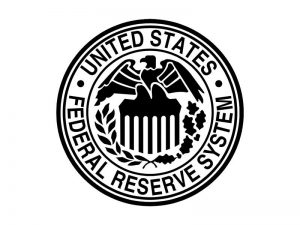 The jumbo market is growing, but after a near-death experience in 2007, it’s barely breathing.
The jumbo market is growing, but after a near-death experience in 2007, it’s barely breathing.
It is very expensive to comply with the CFPB’s demands and threats. And direct lending by a bank escapes the cost of securitization, but also brings the hazard that if not securitized, the bank has to keep the loan.
Last week, the great Wall Street Journal took a whack at describing the market for jumbo mortgages. The Journal is not fond of real estate (much better to leave your money in the stock market), hostile to mortgages (too much government involved), but friendly to banks (they issue stock). So, the jumbo story had the usual odd Journal flavor.
The authors discovered that the jumbo market is growing, that banks are central to it, that jumbo rates are almost the same as “conforming,” and found evidence of race discrimination.
What’s happening to the jumbo market?
The jumbo market is growing, but after a near-death experience in 2007, it’s barely breathing. Securitization had been the primary source of jumbo money since savings and loans died in the ’80s.
A jumbo is a jumbo because its a loan too big to put in a Fannie mortgage-backed security, and a sideshow — in pink of health rarely more than 10 percent of originations, and outstandings an even smaller percent of the total outstanding.
Subprime loans in their trillions were also securitized, into “asset-backed securities” — the most broad definition including jumbos, and the very first market to melt down in July 2007. Radioactive slag ABS-jumbos became, and damned hard to find until about 2011. Banks were in no condition to lend — Jamie Dimon’s golf pro might have gotten a loan, but nobody else.
Now we have the return of jumbo securitization, but in trivial amounts, a few tens of billions; credit unions making a few; REITs buying a few; but banks back in the game. A very old game: If we offer jumbos in a scarce market, we’ll pick up as customers the mythic “high-net-worth households.”
In a scarce market, we’ll also cherry-pick. We will be infernally difficult to grant approval. We will originate on a zero-default basis. Dimon will default on his loan before these new ones do.
What’s race have to do with it?
There is race discrimination in lending. Still. Despite training, enforcement, and a new and younger set of loan officers. But it seems centered in red-lining, a natural reluctance to lend in shaky neighborhoods. The apparent discrimination in jumbo lending today found by the Journal — significantly lower rates of approval for African-Americans and Hispanics — I believe is an artifact of financial cherry-picking, and in two particular spots.
Agency lending — Fannie, Freddie, VA, FHA — has returned to recognizable normal. Oppressively over-regulated and confusing to consumers, but we’re getting done most loans which were sensible in the ’80s and ’90s, and very few stupid ones. In particular, we can easily lend with 5 percent down and credit scores in the mid-to high 600s.
And even less of both.
However, the jumbo down-payment speed limit is 20 percent, a bare handful at 15 percent.
We can find some jumbo ARMs (adjustable-rate mortgages) with 10 percent down, but few want one of those at an all-time low in rates, or with the added cost of mortgage insurance or equivalent.
Most fixed-rate jumbos forbid simultaneous piggyback second mortgages, to get to 10 percent down. And the jumbo FICO speed limit is always above 700, and sometimes as high as 720.
Every financial survey of African-American and Hispanic households finds less in liquid cash resource than white and Asian — that gap a discrimination residual, as well as lower FICOs. Thus I’ll argue that apparent jumbo discrimination flows from color-blind cherry-picking, not overt discrimination.
As to the rate differential to conforming, it’s true that jumbo-hungry banks have undercut new securitizers and crept close to conforming. However, they’re not offering low rates out of kindness.
All things are relative: it’s not so much low jumbo rates as how relatively high conforming ones are — relative to the market cop, the 10-year T-note. That conforming-to- 10-year spread is wide, close to 2.00 percent, at least 0.25 percent wider than normal.
Why? Uber-regulation. It is very expensive to comply with the CFPB’s demands and threats. And direct lending by a bank escapes the cost of securitization, but also brings the hazard that if not securitized, the bank has to keep the loan, not great in a rising-rate environment.
The current jumbo-favorable spread may soon disappear. Bank lending is driven by deposit cost, which ultimately is controlled by the Fed. As the Fed comes up, so will jumbos. Conforming loans may stay low with the 10-year, pulled down by ultra-low sovereign rates overseas.
